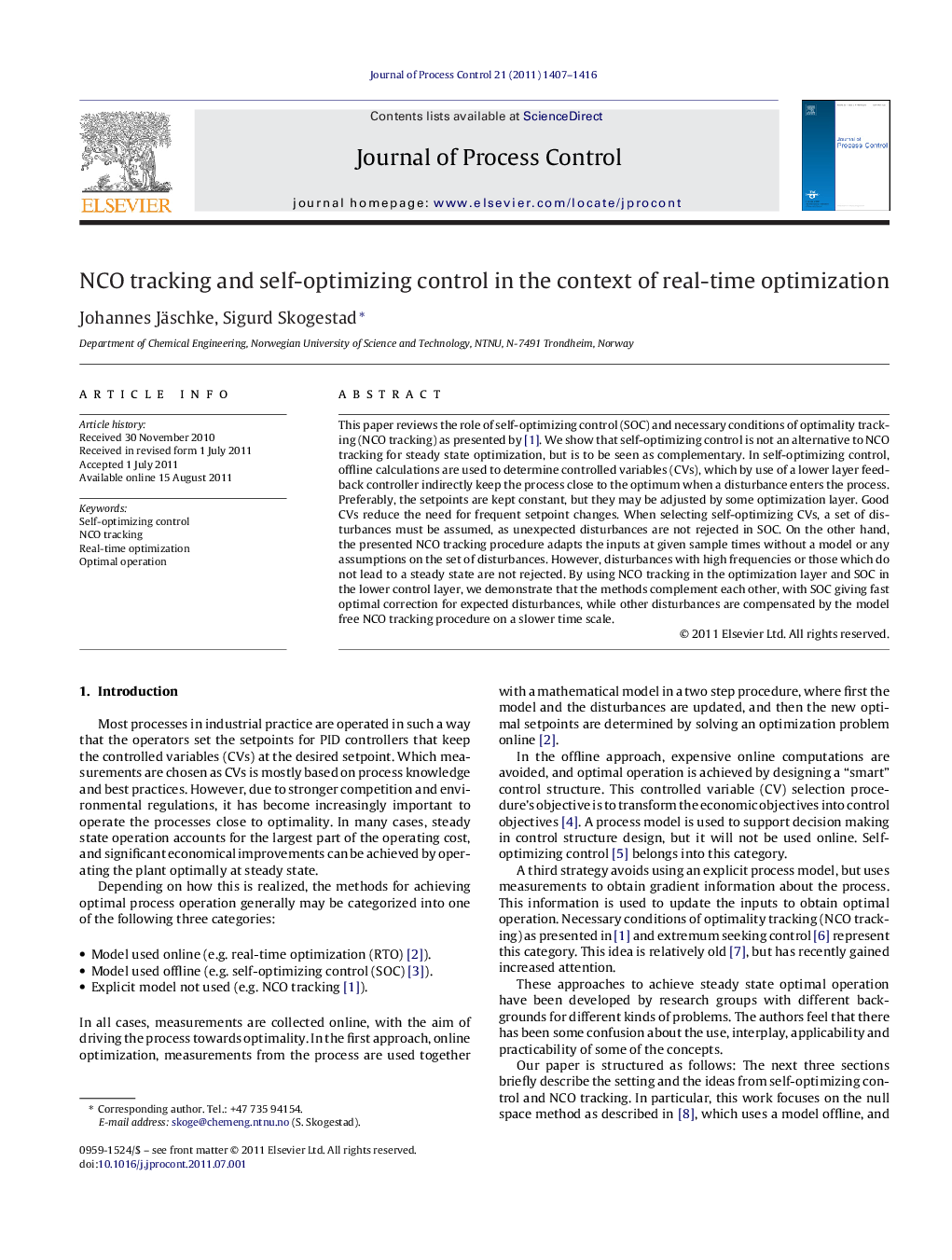| کد مقاله | کد نشریه | سال انتشار | مقاله انگلیسی | نسخه تمام متن |
|---|---|---|---|---|
| 689556 | 889619 | 2011 | 10 صفحه PDF | دانلود رایگان |

This paper reviews the role of self-optimizing control (SOC) and necessary conditions of optimality tracking (NCO tracking) as presented by [1]. We show that self-optimizing control is not an alternative to NCO tracking for steady state optimization, but is to be seen as complementary. In self-optimizing control, offline calculations are used to determine controlled variables (CVs), which by use of a lower layer feedback controller indirectly keep the process close to the optimum when a disturbance enters the process. Preferably, the setpoints are kept constant, but they may be adjusted by some optimization layer. Good CVs reduce the need for frequent setpoint changes. When selecting self-optimizing CVs, a set of disturbances must be assumed, as unexpected disturbances are not rejected in SOC. On the other hand, the presented NCO tracking procedure adapts the inputs at given sample times without a model or any assumptions on the set of disturbances. However, disturbances with high frequencies or those which do not lead to a steady state are not rejected. By using NCO tracking in the optimization layer and SOC in the lower control layer, we demonstrate that the methods complement each other, with SOC giving fast optimal correction for expected disturbances, while other disturbances are compensated by the model free NCO tracking procedure on a slower time scale.
► We consider NCO tracking and self-optimizing control for steady state optimization.
► We find the methods to be complementary and propose to use them together in different control layers.
► Self-optimizing control should be used in the lower layer, NCO tracking on top of it in the optimization layer.
► Self-optimizing control layer rejects modelled disturbances on a fast time scale.
► NCO tracking layer corrects for unmodelled disturbances on a slower time scale.
Journal: Journal of Process Control - Volume 21, Issue 10, December 2011, Pages 1407–1416